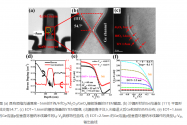Xinyuan Microsco completed industrial and commercial changes and added special equipment manufacturing for semiconductor devices, etc.
Xinyuan Micro (KingSemi) announced that the company’s wholly-owned subsidiary Shanghai Xinyuan Micro Enterprise Development Co., Ltd. registered capital increased from RMB 300 million to RMB 520 million, an increase of 73.33%.
The business scope was changed from: sales of special equipment for semiconductor devices, sales of special electronic equipment, research and development of special electronic materials, engineering management services, etc., to: manufacturing of special electronic equipment, sales of special electronic equipment, manufacturing of special equipment for semiconductor devices , sales of special equipment for semiconductor devices, Electronic special materials research and development, mechanical parts / parts processing , mechanical parts / parts sales , engineering management services, etc.
The business scope was changed from: sales of special equipment for semiconductor devices, sales of special electronic equipment, research and development of special electronic materials, engineering management services, etc., to: manufacturing of special electronic equipment, sales of special electronic equipment, manufacturing of special equipment for semiconductor devices , sales of special equipment for semiconductor devices, Electronic special materials research and development, mechanical parts / parts processing , mechanical parts / parts sales , engineering management services, etc.



